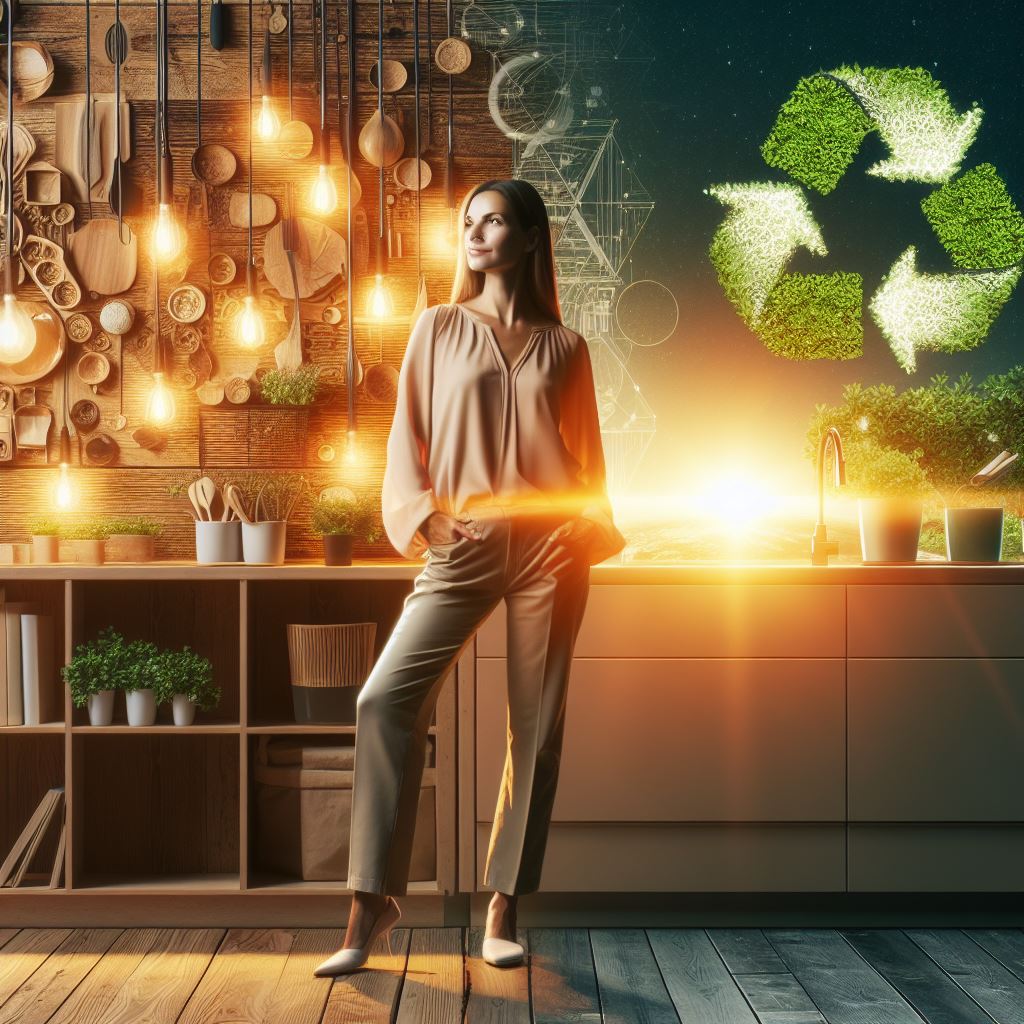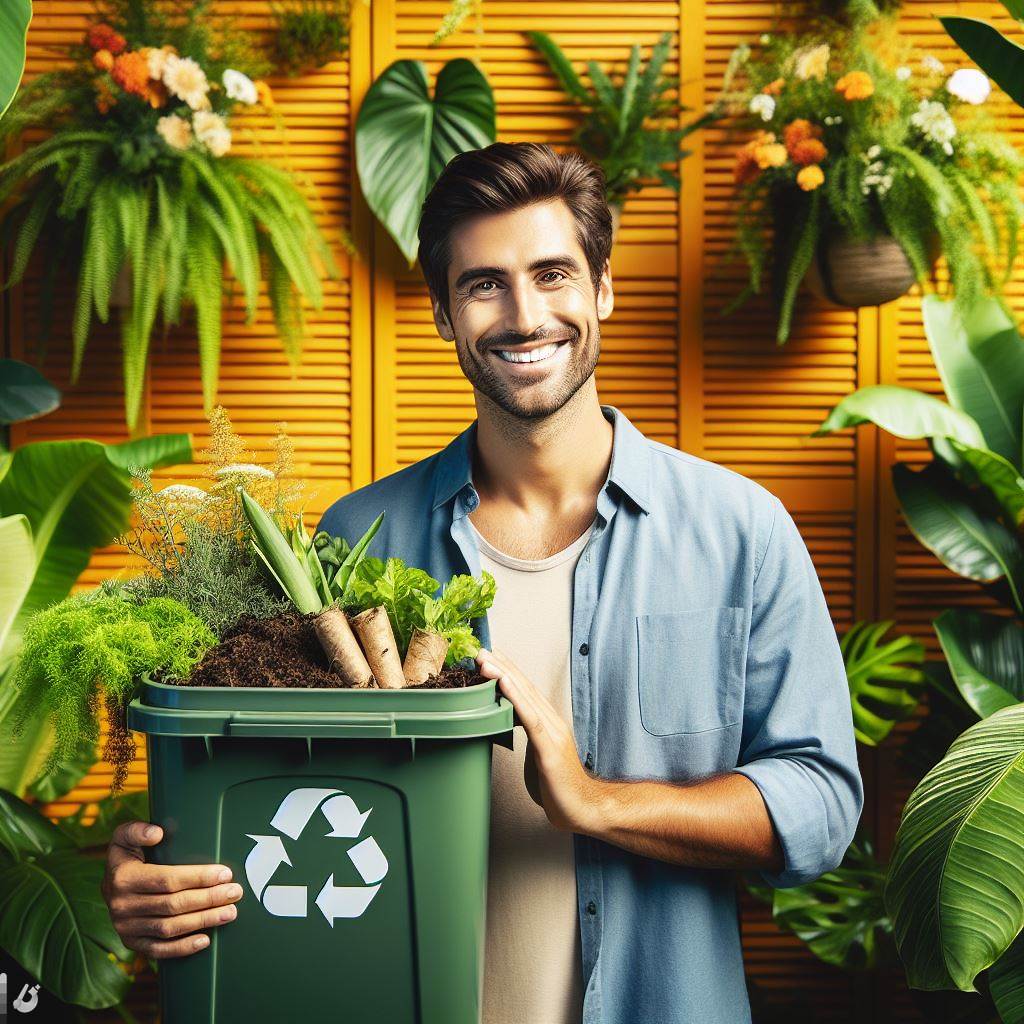Introduction
In today’s design landscape, the concept of eco-friendly cabinetry has blossomed into a pivotal trend.
Homeowners, increasingly conscious of their environmental impact, are turning to sustainable options, reshaping the way we approach interior design.
Rising Demand
The allure of sustainability is not confined to conscious living; it has penetrated the very fabric of the real estate market.
Homebuyers, now more than ever, actively seek environmentally responsible features, and green cabinetry has become a beacon in this regard.
The demand for homes adorned with eco-friendly elements is not merely a preference; it has evolved into a decisive factor influencing property choices.
As the real estate market shifts towards a greener future, the popularity of sustainable cabinetry options continues to soar.
No longer just a niche choice for the environmentally committed, green cabinetry has seamlessly integrated into the mainstream, becoming an enticing prospect for a broader spectrum of homeowners.
The introduction of eco-friendly cabinetry is not merely a nod to a passing trend; it reflects a larger shift in lifestyle choices.
As individuals become more aware of their ecological footprint, the demand for sustainable living solutions rises in tandem.
In this context, eco-friendly cabinetry stands out as a tangible and aesthetically pleasing way to contribute to a more sustainable and environmentally conscious lifestyle.
In the sections that follow, we will delve into the myriad facets of eco-friendly cabinetry, exploring trends, providing practical tips, and showcasing the seamless integration of sustainability and style.
As we navigate through this eco-conscious journey, you’ll discover how adopting green cabinetry is not just a choice; it’s a statement about our commitment to a harmonious coexistence with the planet.
Read: Mastering Contractor Management in Renovations
Why Choose Eco-Friendly Cabinetry?
Environmental benefits of opting for eco-friendly cabinetry
The use of recycled or sustainable materials is a core feature of eco-friendly cabinetry.
Instead of relying on virgin resources, eco-friendly materials are made from reclaimed or renewable sources. This reduces waste and promotes a circular economy.
Transform Your Real Estate Decisions
Unlock personalized real estate insights crafted just for you. Get actionable advice designed to amplify your success.
Get StartedTraditional cabinetry often involves the extraction, processing, and transportation of materials, which contributes to greenhouse gas emissions.
Opting for eco-friendly cabinetry helps to lower the carbon footprint associated with these processes.
Natural resources, such as forests and water, are crucial for the production of cabinetry.
By choosing eco-friendly options, homeowners contribute to the preservation of these resources and help combat deforestation and water scarcity.
Health benefits associated with eco-friendly materials
VOCs, such as formaldehyde, are found in many traditional cabinetry materials and finishes.
These chemicals can be released into the indoor air, contributing to poor air quality and potential health issues.
Eco-friendly cabinetry lowers the emission of VOCs, creating a healthier living environment.
Improved indoor air quality is another significant health benefit associated with eco-friendly materials.
By using low-emission materials, homeowners can reduce the concentration of harmful chemicals and pollutants in their homes.
Traditional cabinetry materials, such as particleboard, can contain toxins and allergens that can cause respiratory problems and allergies.
Eco-friendly cabinetry avoids or minimizes the use of these materials, reducing the risk of health issues for the entire family.
In fact, choosing eco-friendly cabinetry offers multiple benefits for both the environment and personal health.
By using recycled or sustainable materials, homeowners contribute to waste reduction and the preservation of natural resources.
Additionally, eco-friendly materials improve indoor air quality, lower the emission of harmful chemicals, and decrease exposure to toxins and allergens.
Showcase Your Real Estate Business
Publish your company profile on our blog for just $200. Gain instant exposure and connect with a dedicated audience of real estate professionals and enthusiasts.
Publish Your ProfileEmbracing eco-friendly cabinetry is a step towards creating a more sustainable and healthier living space.
Read: Geothermal Heating: Pros and Cons
Latest Trends in Eco-Friendly Cabinetry
Cabinetry plays a significant role in the overall design of any kitchen or bathroom.
As sustainability and eco-consciousness become more prevalent, eco-friendly cabinetry is gaining popularity.
This blog section will explore three latest trends in eco-friendly cabinetry: bamboo cabinetry, reclaimed wood cabinetry, and low or zero VOC finishes.
Bamboo Cabinetry
Bamboo is a highly sustainable material due to its rapid growth characteristics.
It can be harvested in just a few years compared to traditional hardwoods that take decades to mature.
Additionally, bamboo cabinetry offers excellent durability and flexibility, making it suitable for various design styles.
Design options with bamboo cabinetry are diverse, ranging from modern sleek styles to traditional designs, providing homeowners with ample choices for their desired aesthetic.
Reclaimed Wood Cabinetry
Reclaimed wood cabinetry involves using salvaged or repurposed wood from old structures or furniture.
This practice not only reduces waste but also creates a unique and rustic aesthetic in kitchens and bathrooms.
Reclaimed wood is highly sought after in modern designs, as it adds character and a sense of history to the space.
Its popularity stems from the desire to incorporate sustainable materials with a touch of nostalgia.
Low or Zero VOC Finishes
Volatile organic compounds (VOCs) are chemicals found in many conventional finishes and can have harmful effects on both the environment and personal health.
Choosing low or zero VOC finishes for cabinetry is crucial in maintaining a healthy indoor environment.
Water-based and natural finishes are readily available alternatives that minimize the release of harmful chemicals.
Opting for non-toxic finishes not only benefits the environment but also ensures the well-being of individuals using the space.
In short, eco-friendly cabinetry has become a significant trend in the design industry. Bamboo cabinetry offers durability, flexibility, and various design options.
Reclaimed wood cabinetry provides a unique and rustic aesthetic while using salvaged materials.
Opting for low or zero VOC finishes is essential for protecting the environment and personal health.
Incorporating these latest trends in eco-friendly cabinetry allows homeowners to create stylish and sustainable spaces.
Read: 5 Key Tips for Choosing the Best Contractor

Tips for Choosing and Maintaining Eco-Friendly Cabinetry
Choosing and maintaining eco-friendly cabinetry is not only a responsible choice but also a way to contribute to a healthier environment.
By following these tips, you can ensure that your cabinetry aligns with your sustainable lifestyle.
Research and verify certifications
Researching and verifying certifications is the first step in selecting eco-friendly cabinetry.
Certifications such as the FSC or CARB compliance indicate that the wood used in the cabinetry comes from responsibly managed forests and meets air quality standards.
When discussing these certifications, emphasize their importance and credibility.
To help readers identify certified eco-friendly cabinetry, provide them with practical tips.
For example, advise them to look for labels or tags on the cabinets that mention the certifications.
Additionally, suggest checking the manufacturer’s website for information about their commitment to sustainability.
Showcase Your Real Estate Business
Publish your company profile on our blog for just $200. Gain instant exposure and connect with a dedicated audience of real estate professionals and enthusiasts.
Publish Your ProfileThese steps will empower readers to make informed decisions about their purchases.
Consider the entire life cycle
Considering the entire life cycle of the cabinetry is crucial in minimizing environmental impact.
Encourage readers to think beyond the initial purchase and consider the longevity and potential for recycling of their chosen cabinetry.
Emphasize the significance of selecting durable materials that can withstand the test of time.
Furthermore, highlight the importance of proper installation and maintenance.
A well-installed and properly maintained cabinetry will not only last longer but also reduce the need for replacements, thus minimizing waste.
Provide maintenance tips, such as regularly cleaning and avoiding harsh chemical cleaners, to help readers prolong the lifespan of their cabinets.
Seek professional advice and consultation
Seeking professional advice and consultation can greatly assist in making eco-friendly cabinetry choices.
Recommend readers to consult with certified interior designers or architects who specialize in sustainable materials.
These professionals possess the expertise and knowledge to guide readers towards the most environmentally conscious options.
Explain the benefits of their guidance, such as gaining insights into the latest eco-friendly materials and designs.
They can also assist in creating a cohesive and aesthetically pleasing space while adhering to sustainable values.
Encourage readers to schedule consultations to explore various options and discuss their specific needs and vision.
In review, choosing and maintaining eco-friendly cabinetry involves thorough research, considering the life cycle of the product, and seeking expert advice.
By following these tips, homeowners can enjoy beautiful, durable, and environmentally responsible cabinetry that aligns with their eco-conscious values.
Read: Smart Thermostats: Save Energy & Money
Conclusion
Recap the advantages of eco-friendly cabinetry for the environment and personal health
In choosing eco-friendly cabinetry, you actively reduce deforestation, preserving vital ecosystems and biodiversity.
Opting for sustainable materials minimizes exposure to harmful chemicals, ensuring a healthier indoor air quality for your family.
Recycled and repurposed wood options contribute to a circular economy, lessening the burden on landfills and promoting resource efficiency.
The use of low-VOC finishes prevents the release of toxic pollutants, safeguarding both the environment and your respiratory well-being.
Energy-efficient manufacturing processes in eco-friendly cabinetry reduce carbon footprints, mitigating climate change impacts and promoting a cleaner atmosphere.
Encouragement to consider incorporating sustainable options in their cabinetry choices
Take a step towards a greener home by choosing cabinetry made from responsibly sourced materials, promoting ethical forestry practices.
Consider bamboo, a rapidly renewable resource, as an alternative to traditional wood for a sustainable and stylish cabinet option.
Explore local craftsmen who specialize in eco-friendly cabinetry, supporting small businesses committed to environmentally conscious practices.
Look for certification labels such as FSC (Forest Stewardship Council) to ensure the sustainability and ethical sourcing of your chosen cabinetry.
Reinforcing the positive impact of small changes towards creating a greener and healthier living space
Embrace the power of small changes, recognizing that sustainable cabinetry choices contribute to a larger, positive environmental impact.
By making conscious decisions in your cabinetry selection, you actively participate in the global movement towards a more sustainable and eco-friendly future.
Create a ripple effect by inspiring others to follow suit, collectively building a community committed to preserving the planet for future generations.
The shift towards eco-friendly cabinetry not only enhances the aesthetics of your living space but also fosters a healthier environment, demonstrating that responsible choices can lead to a brighter, greener future.




